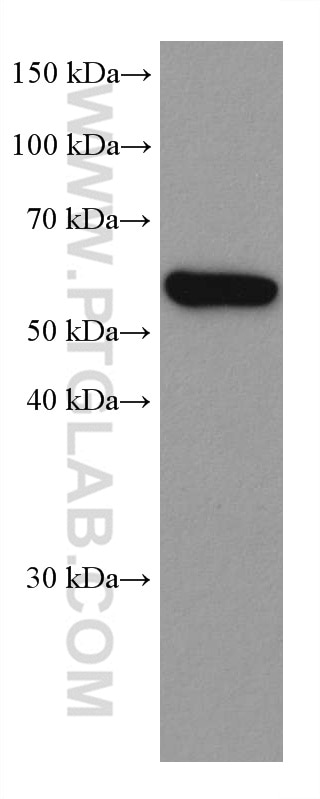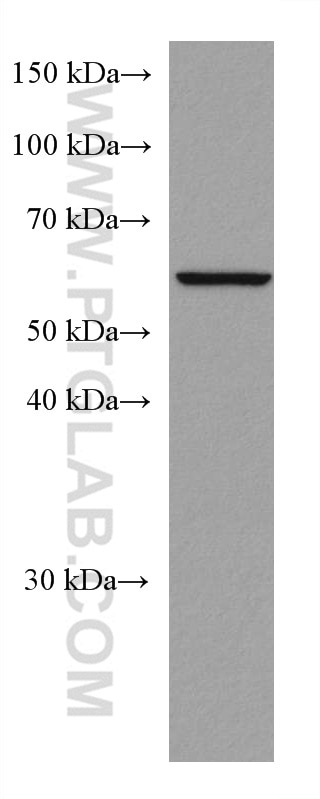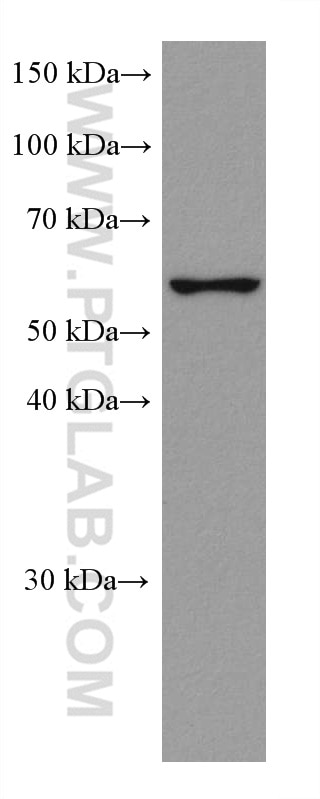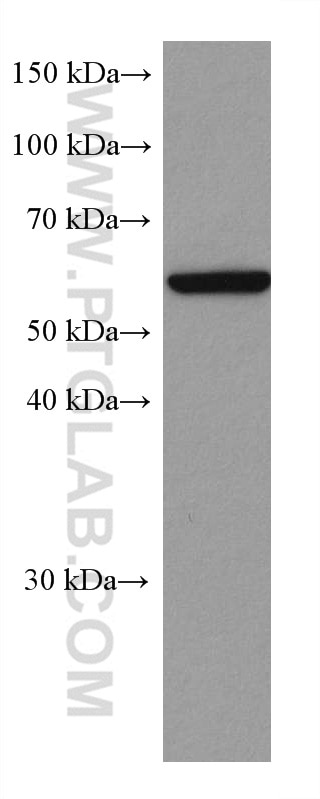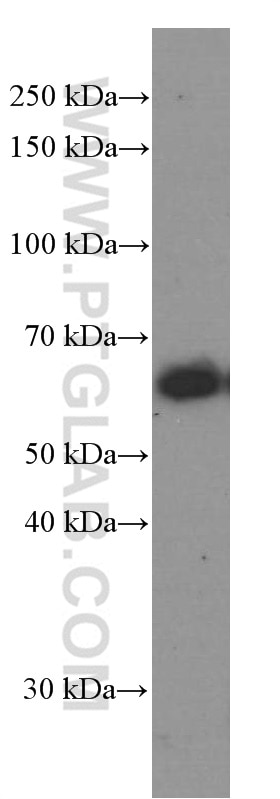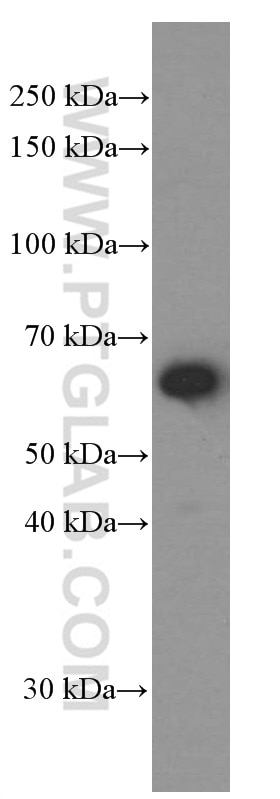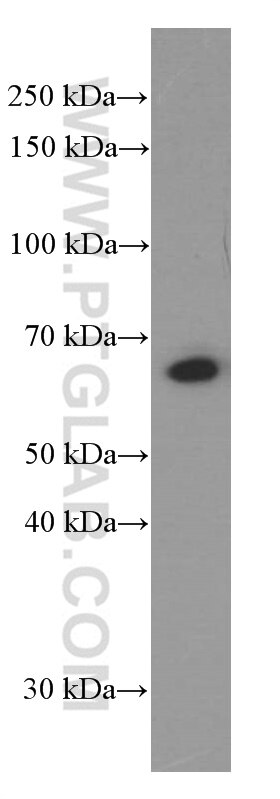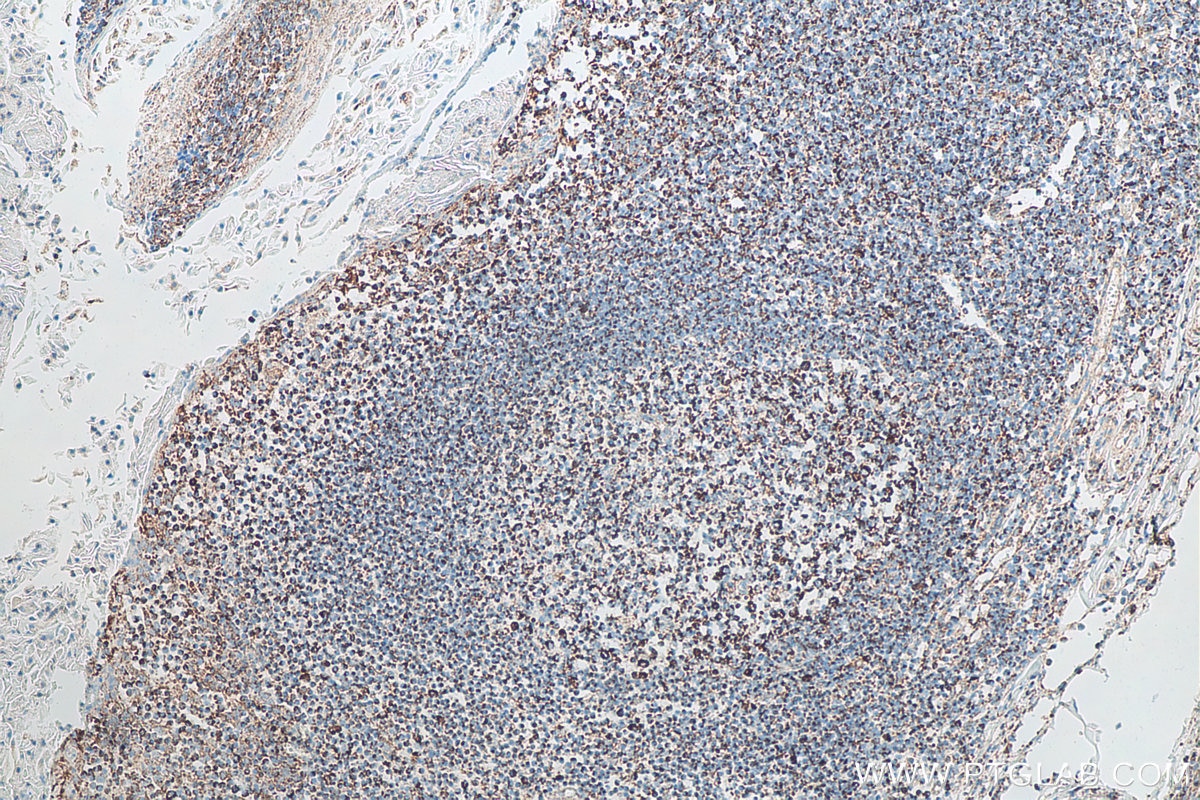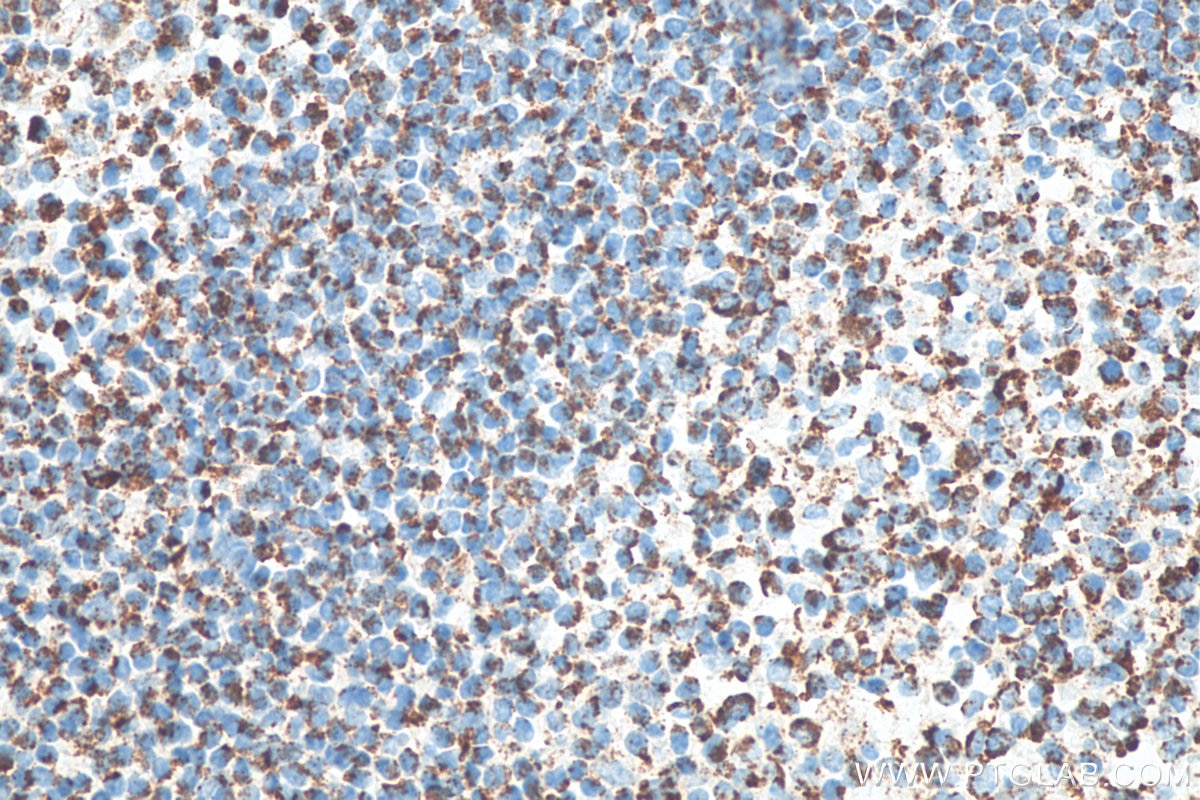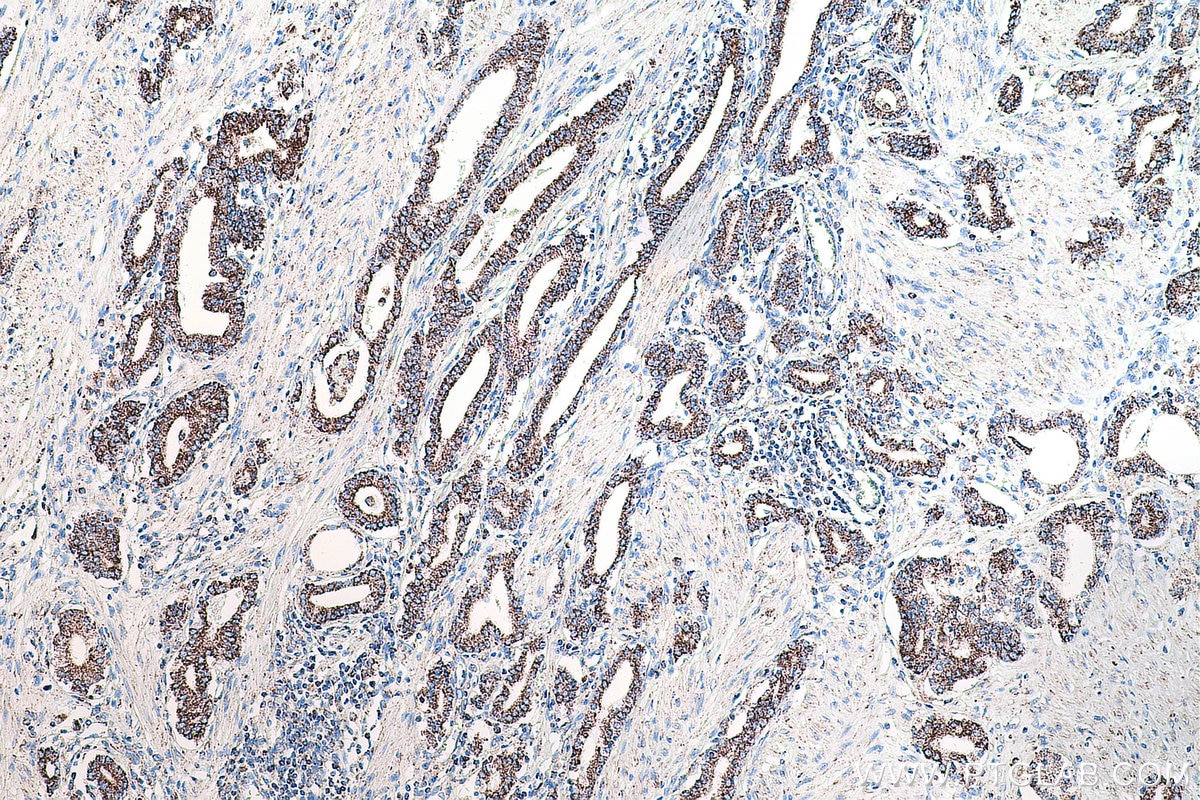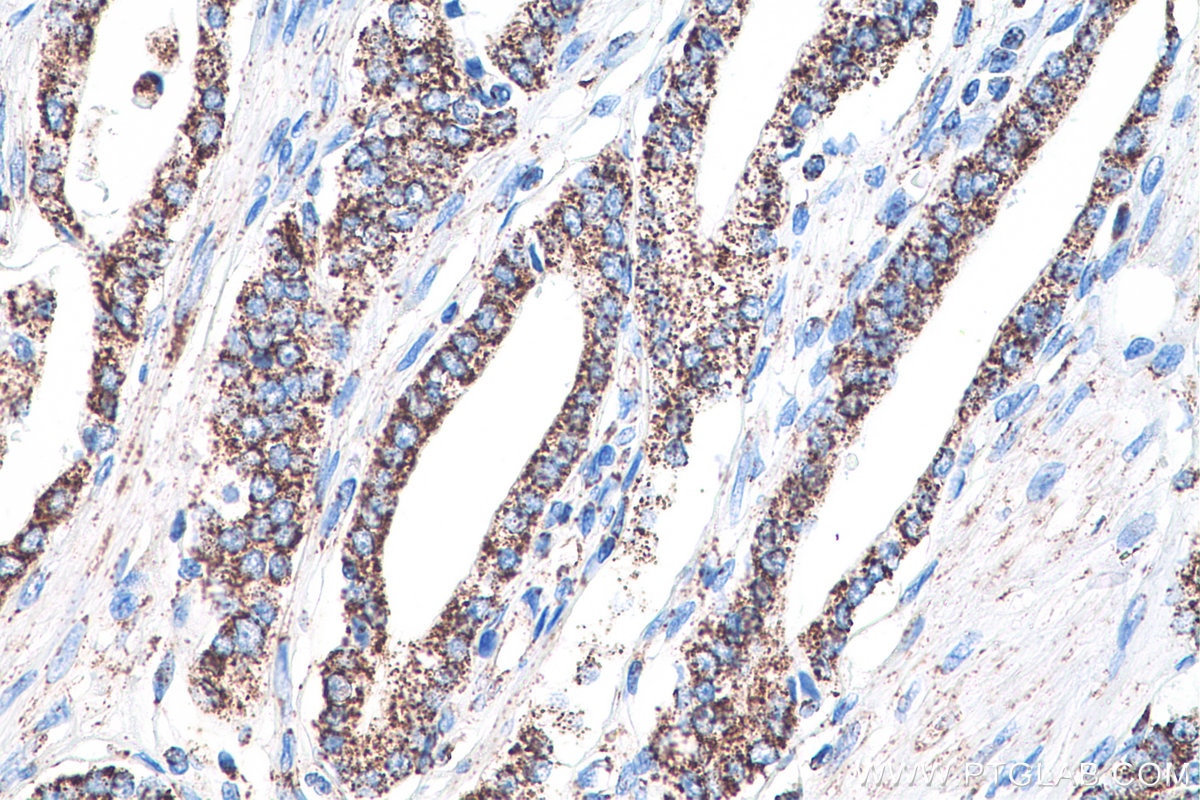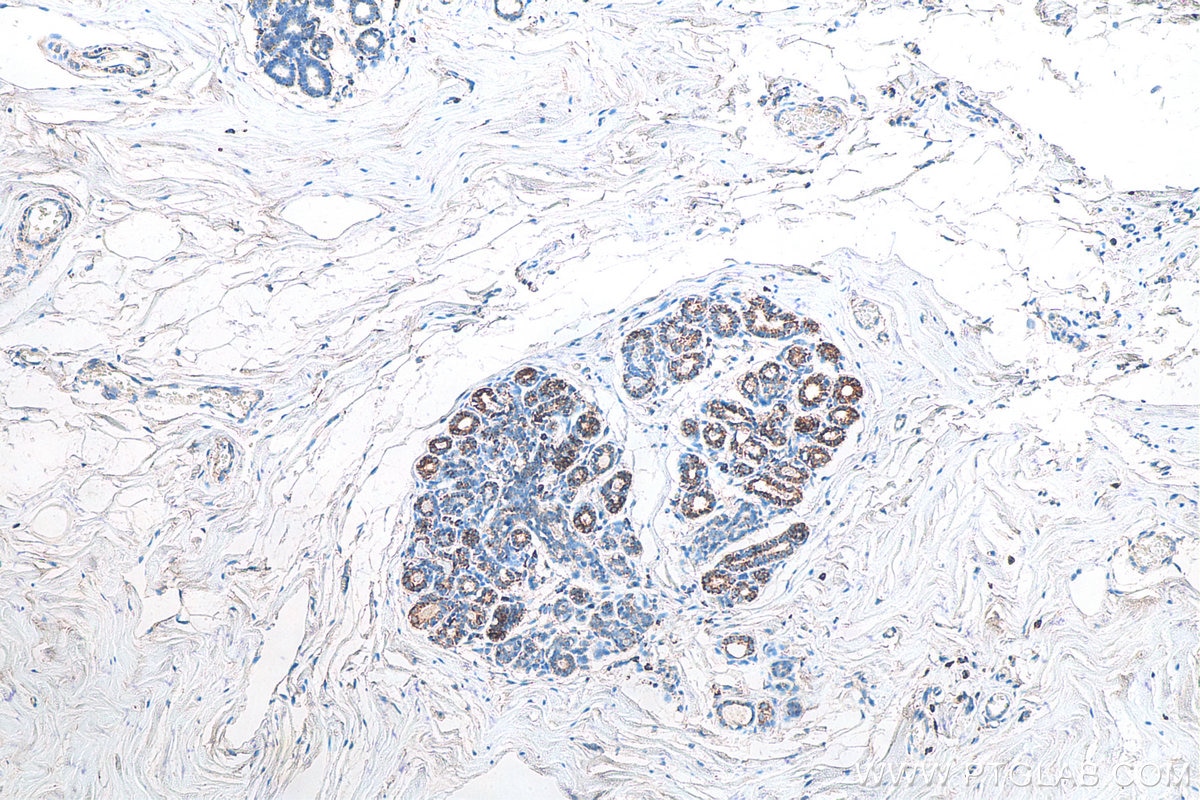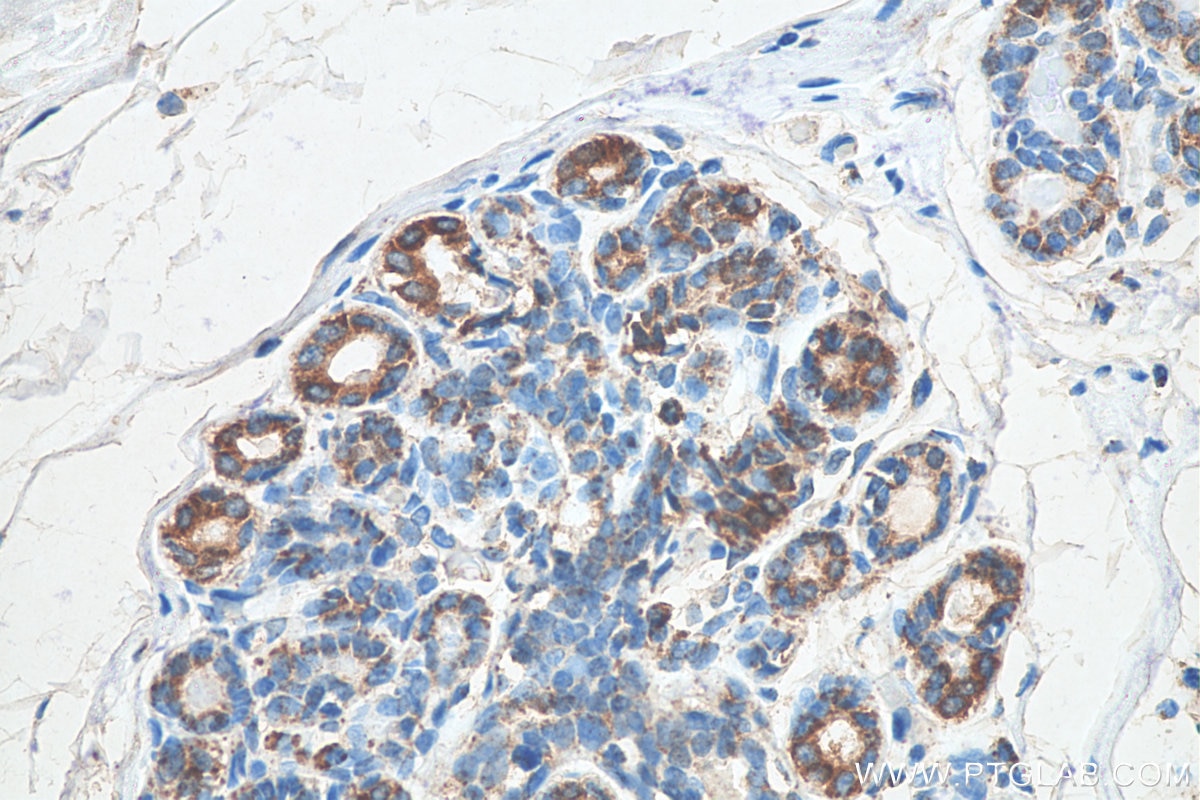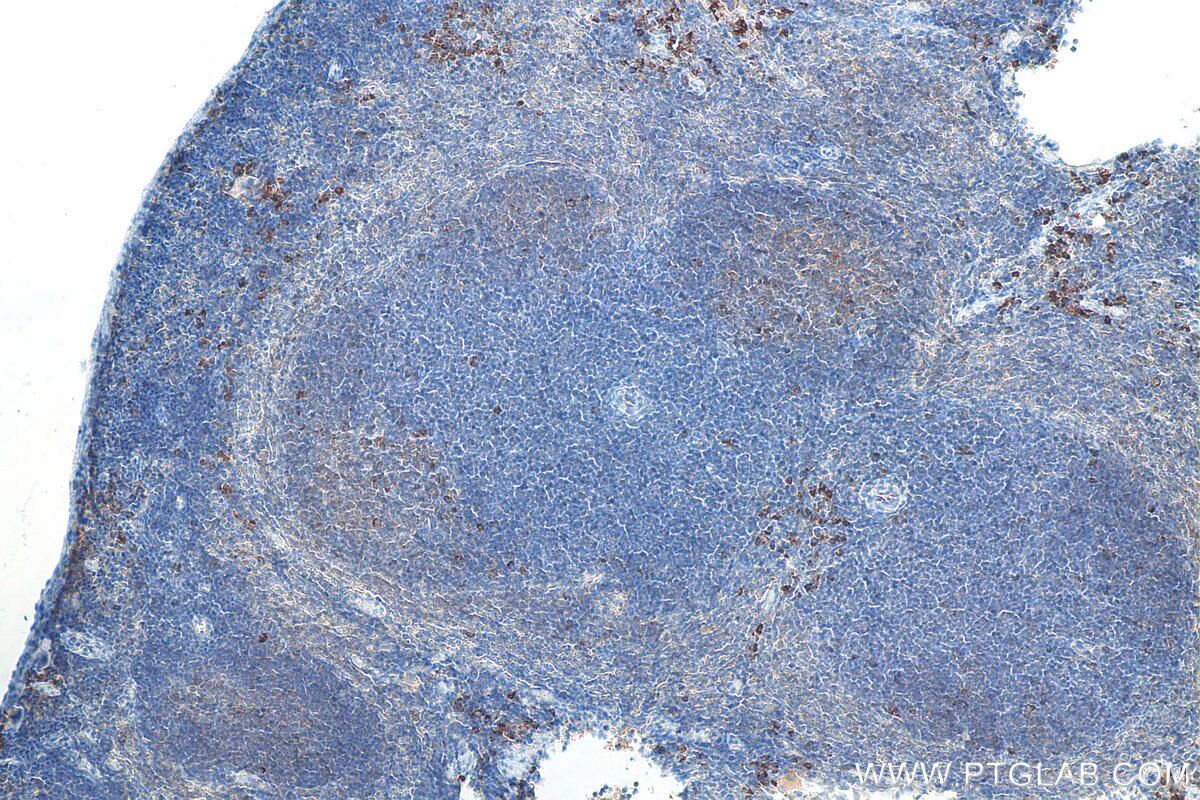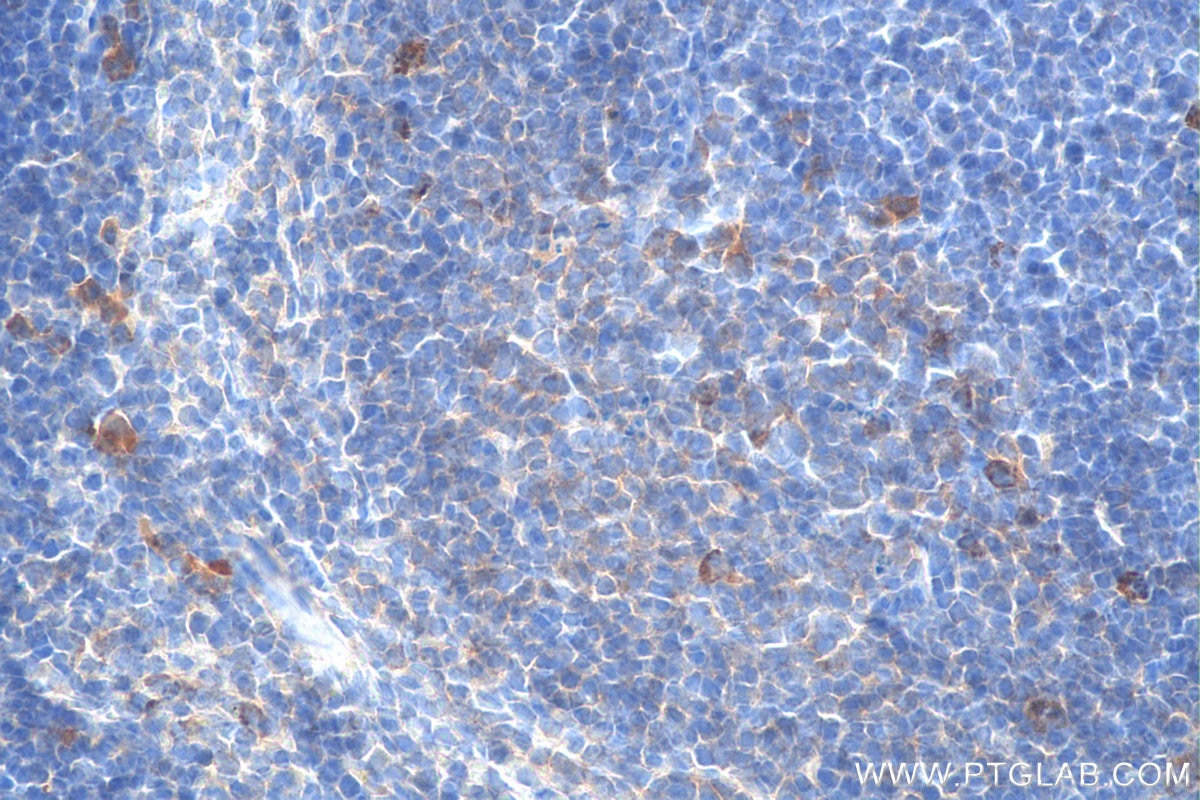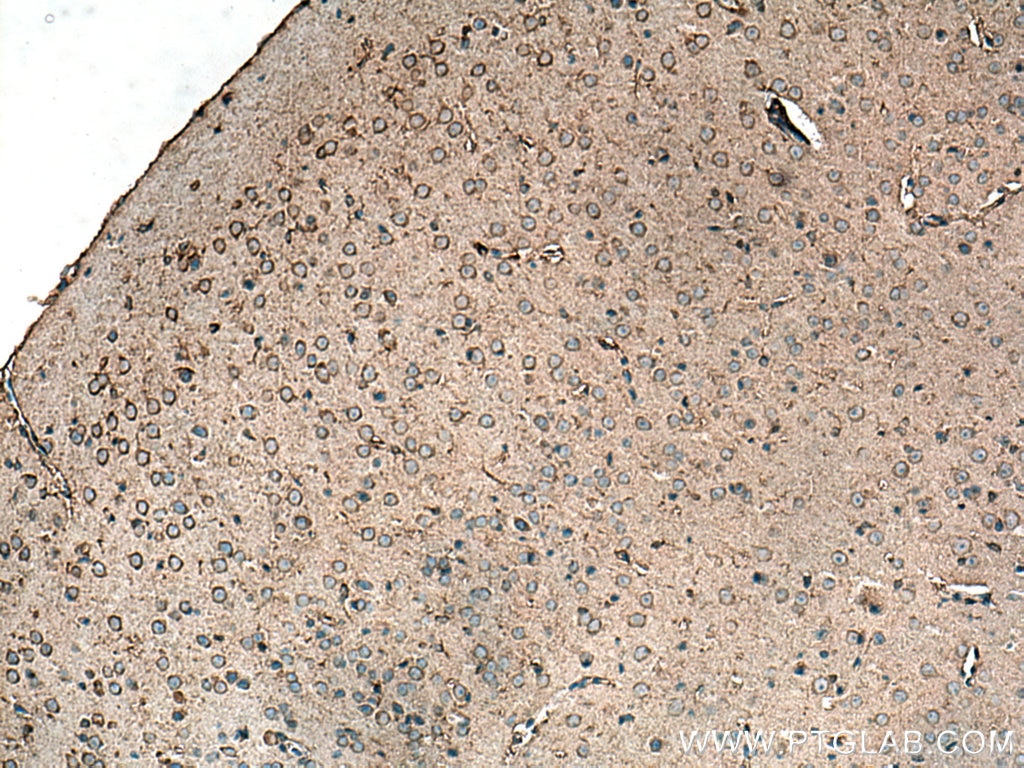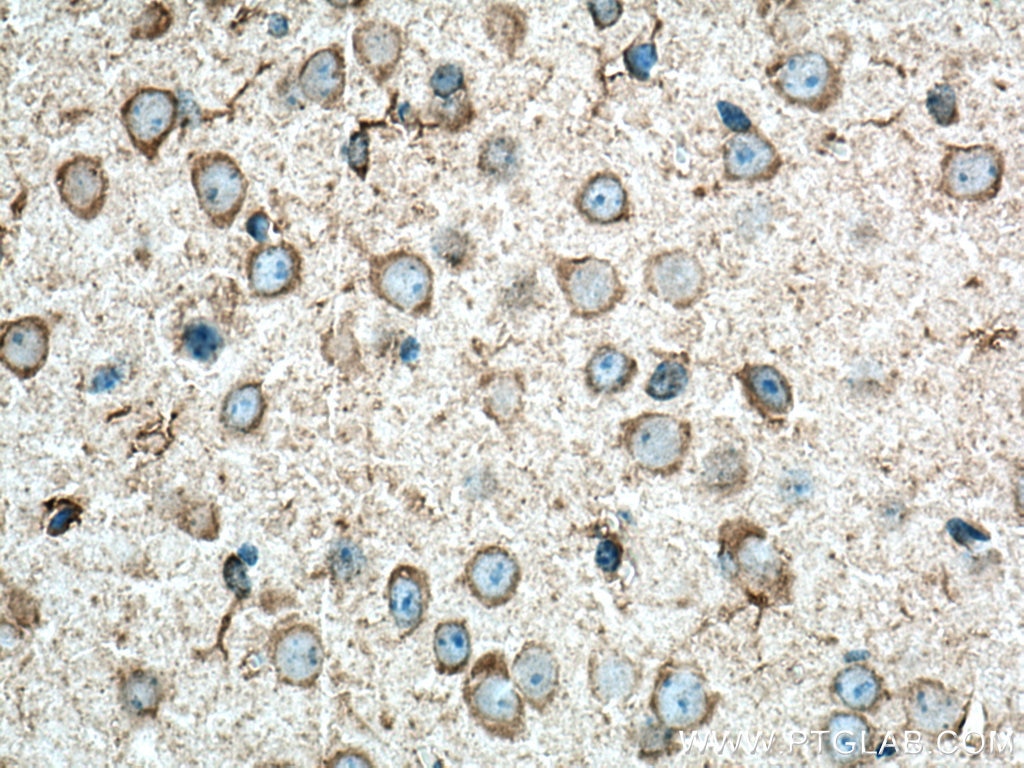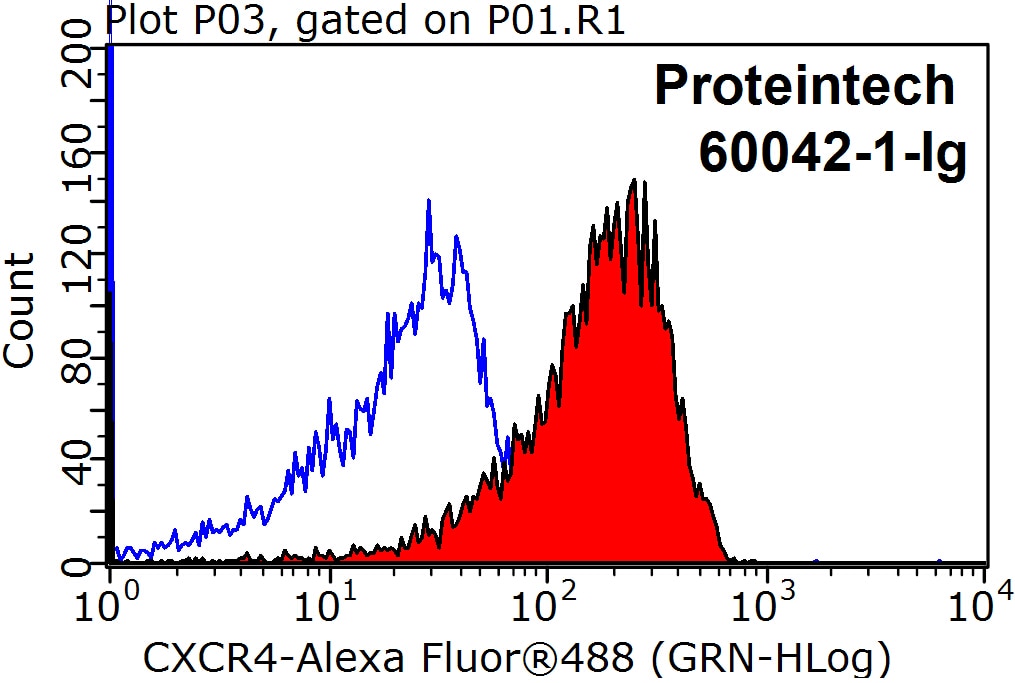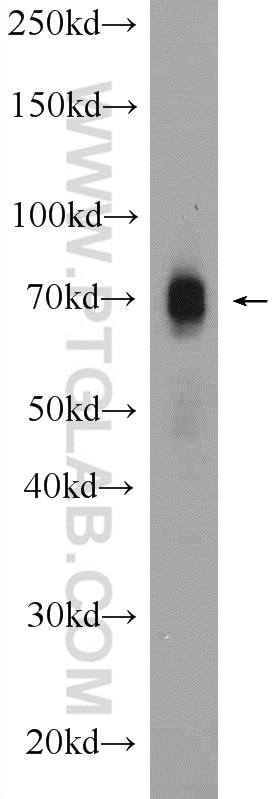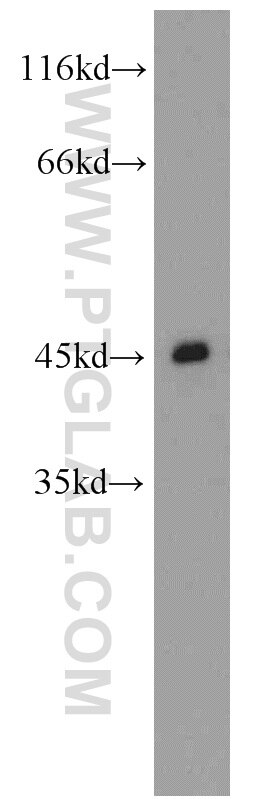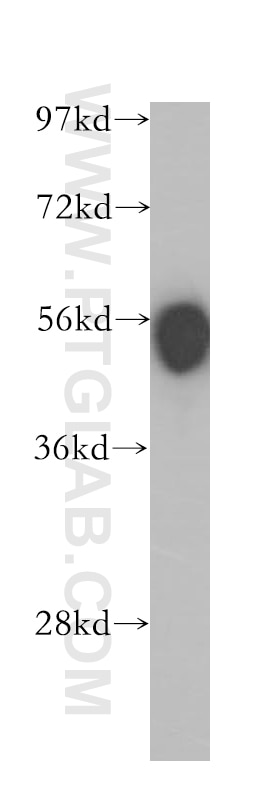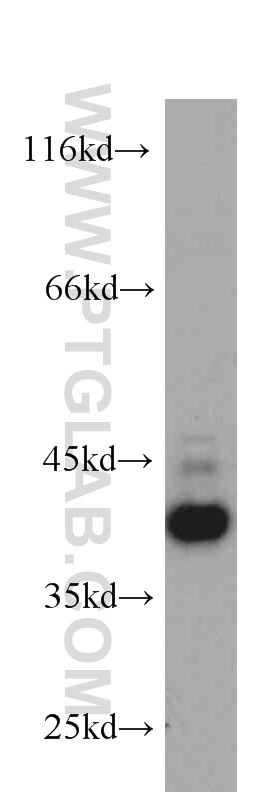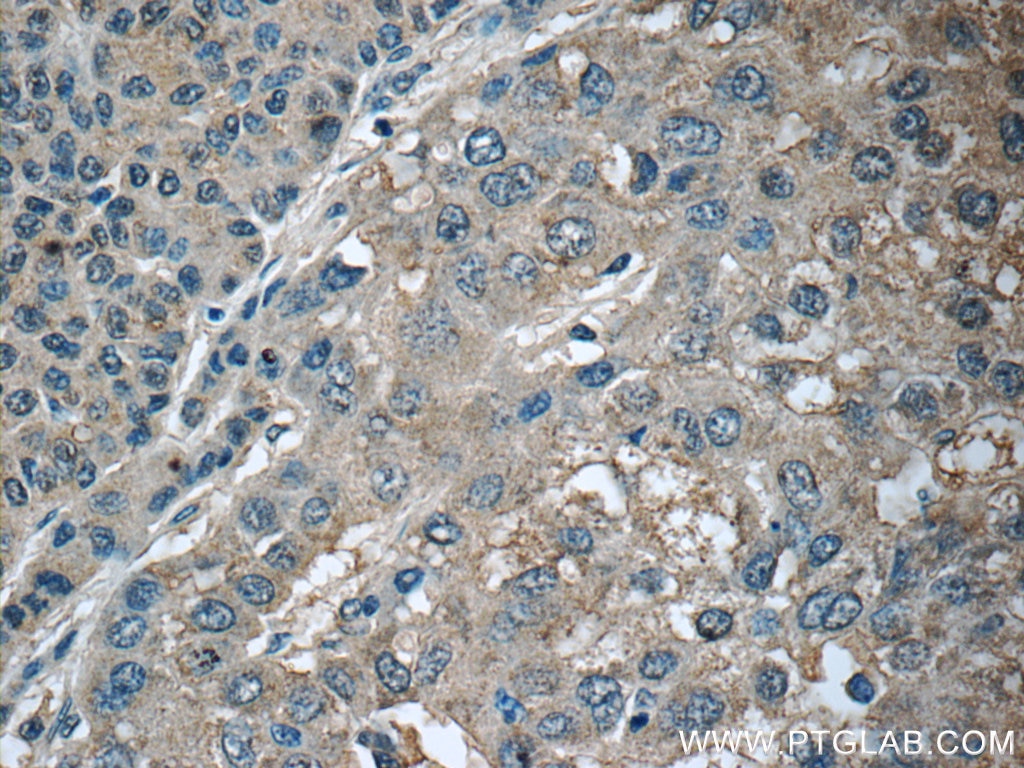- Phare
- Validé par KD/KO
Anticorps Monoclonal anti-CXCR4
CXCR4 Monoclonal Antibody for FC, IHC, WB, ELISA
Hôte / Isotype
Mouse / IgM
Réactivité testée
Humain, souris
Applications
WB, IHC, IF, FC, CoIP, ELISA
Conjugaison
Non conjugué
CloneNo.
4B5E4
N° de cat : 60042-1-Ig
Synonymes
Galerie de données de validation
Applications testées
| Résultats positifs en WB | cellules HeLa, cellules Daudi, cellules Jurkat, cellules K-562, cellules Ramos, cellules THP-1, cellules U-937 |
| Résultats positifs en IHC | tissu d'amygdalite humain, tissu cérébral de souris, tissu de cancer de la prostate humain, tissu de cancer du sein humain, tissu splénique de souris il est suggéré de démasquer l'antigène avec un tampon de TE buffer pH 9.0; (*) À défaut, 'le démasquage de l'antigène peut être 'effectué avec un tampon citrate pH 6,0. |
| Résultats positifs en cytométrie | cellules Jurkat |
Dilution recommandée
| Application | Dilution |
|---|---|
| Western Blot (WB) | WB : 1:1000-1:4000 |
| Immunohistochimie (IHC) | IHC : 1:300-1:1200 |
| Flow Cytometry (FC) | FC : 0.20 ug per 10^6 cells in a 100 µl suspension |
| It is recommended that this reagent should be titrated in each testing system to obtain optimal results. | |
| Sample-dependent, check data in validation data gallery | |
Applications publiées
| KD/KO | See 8 publications below |
| WB | See 35 publications below |
| IHC | See 8 publications below |
| IF | See 9 publications below |
| CoIP | See 2 publications below |
Informations sur le produit
60042-1-Ig cible CXCR4 dans les applications de WB, IHC, IF, FC, CoIP, ELISA et montre une réactivité avec des échantillons Humain, souris
| Réactivité | Humain, souris |
| Réactivité citée | Humain, souris |
| Hôte / Isotype | Mouse / IgM |
| Clonalité | Monoclonal |
| Type | Anticorps |
| Immunogène | CXCR4 Protéine recombinante Ag1528 |
| Nom complet | chemokine (C-X-C motif) receptor 4 |
| Masse moléculaire calculée | 352 aa, 40 kDa |
| Poids moléculaire observé | 60~70 kDa |
| Numéro d’acquisition GenBank | BC020968 |
| Symbole du gène | CXCR4 |
| Identification du gène (NCBI) | 7852 |
| Conjugaison | Non conjugué |
| Forme | Liquide |
| Méthode de purification | Précipitation de l'acide caprylique/du sulfate d'ammonium |
| Tampon de stockage | PBS avec azoture de sodium à 0,1 % et glycérol à 50 % pH 7,3 |
| Conditions de stockage | Stocker à -20°C. Stable pendant un an après l'expédition. L'aliquotage n'est pas nécessaire pour le stockage à -20oC Les 20ul contiennent 0,1% de BSA. |
Informations générales
C-X-C chemokine receptor type 4 (CXCR4) is a widely expressed G protein-coupled seven-transmembrane receptor. CXCL12/SDF-1 is the biological ligand for CXCR4. The binding of CXCL12 to CXCR4 induces intracellular signaling through several divergent pathways initiating signals related to chemotaxis, cell survival and/or proliferation, increase in intracellular calcium, and gene transcription (PMID: 20484021). CXCR4 also functions as a coreceptor for HIV-1 entry (PMID: 9427609). CXCR4 has a calculated molecular weight of 40 kDa. In addition to the predicted species of 45-47 kDa for glycosylated CXCR4 monomers, due to ubiquitination, dimeration, and different degrees of glycosylation, additional species can also exist and have been reported in some researches, including 67 kDa (PMID: 23917520), 55, 67, 87 kDa (PMID: 20028517), 80 kDa (PMID: 10506573), 47, 50, 62, and 98 kDa (PMID: 16204649).
Protocole
| Product Specific Protocols | |
|---|---|
| WB protocol for CXCR4 antibody 60042-1-Ig | Download protocol |
| IHC protocol for CXCR4 antibody 60042-1-Ig | Download protocol |
| FC protocol for CXCR4 antibody 60042-1-Ig | Download protocol |
| Standard Protocols | |
|---|---|
| Click here to view our Standard Protocols |
Publications
| Species | Application | Title |
|---|---|---|
Nat Commun HIF-1α-PDK1 axis-induced active glycolysis plays an essential role in macrophage migratory capacity. | ||
J Exp Med CXCR4 regulates Plasmodium development in mouse and human hepatocytes.
| ||
Nanoscale Mitomycin C-treated human-induced pluripotent stem cells as a safe delivery system of gold nanorods for targeted photothermal therapy of gastric cancer | ||
ACS Appl Mater Interfaces Surface Functionalization of Polymeric Nanoparticles with Umbilical Cord-Derived Mesenchymal Stem Cell Membrane for Tumor-Targeted Therapy. | ||
Mol Oncol Growth arrest-specific protein 2 (GAS2) interacts with CXCR4 to promote T-cell leukemogenesis partially via c-MYC |
